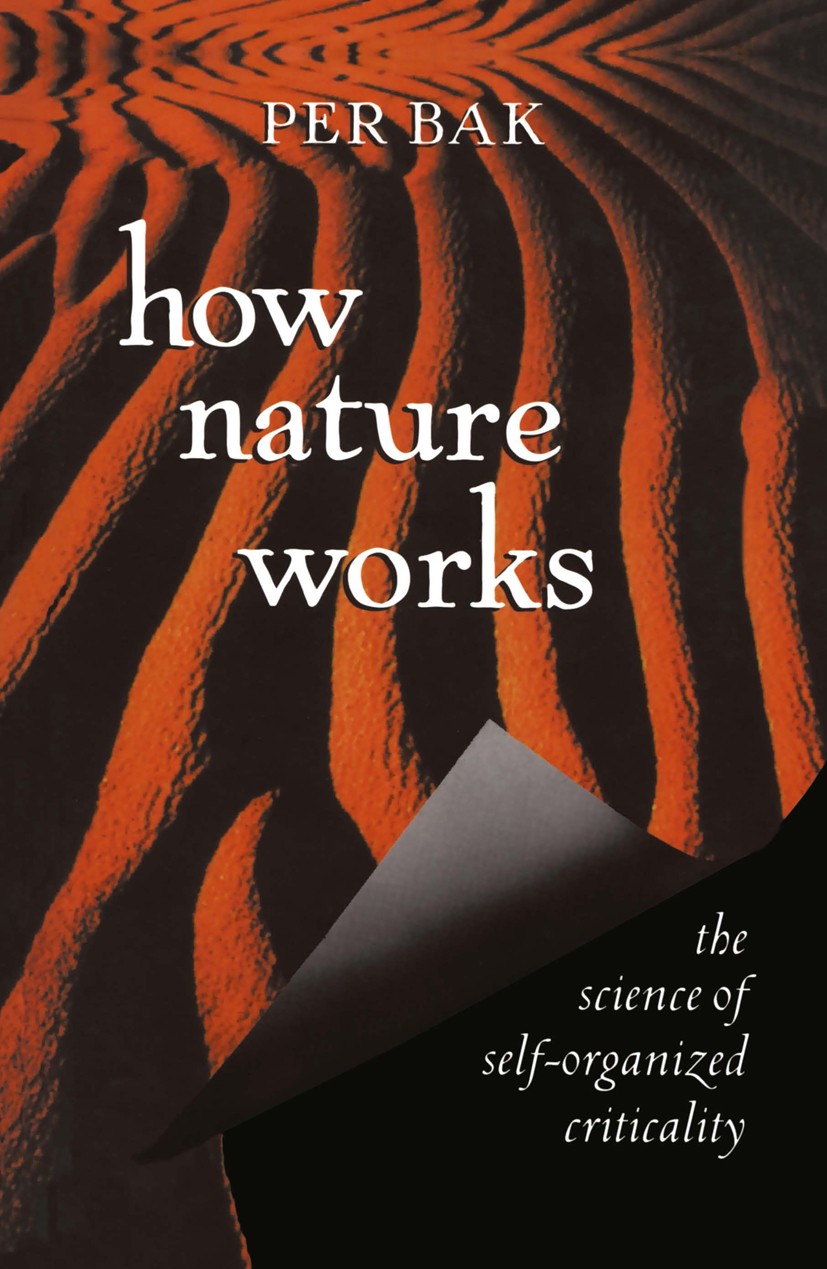| 书目名称 | How Nature Works | | 副标题 | the science of self- | | 编辑 | Per Bak | | 视频video | http://file.papertrans.cn/429/428662/428662.mp4 | | 概述 | Written by the scientist who discovered self-organized criticality Still a cutting-edge theory, ahead of its time when it was published | | 图书封面 |  | | 描述 | and acknowledgments Self-organized criticality is a new way of viewing nature. The basic picture is one where nature is perpetually out of balance, but organized in a poised state-the critical state-where anything can happen within well-defined statistical laws. The aim of the science of self-organized criticality is to yield insight into the fundamental question of why nature is complex, not simple, as the laws of physics imply. Self-organized criticality explains some ubiquitous patterns existing in nature that we view as complex. Fractal structure and catastrophic events are among those regularities. Applications range from the study of pulsars and black holes to earthquakes and the evolution of life. One intriguing conse quence of the theory is that catastrophes can occur for no reason whatsoever. Mass extinctions may take place without any external triggering mechanism such as a volcanic eruption or a meteorite hitting the earth (although the the ory of course cannot rule out that this has in fact occurred). xu How Nature Works Since we first proposed the idea in 1987, more than 2,ooo papers have been written on self-organized criticality, making ours the most cited paper in | | 出版日期 | Book 1996 | | 关键词 | Natur; complex system; complex systems; computer simulation; differential equation; evolution; measure; mod | | 版次 | 1 | | doi | https://doi.org/10.1007/978-1-4757-5426-1 | | isbn_softcover | 978-0-387-98738-5 | | isbn_ebook | 978-1-4757-5426-1 | | copyright | Springer Science+Business Media New York 1996 |
The information of publication is updating

|
|
 |Archiver|手机版|小黑屋|
派博传思国际
( 京公网安备110108008328)
GMT+8, 2025-11-14 06:27
|Archiver|手机版|小黑屋|
派博传思国际
( 京公网安备110108008328)
GMT+8, 2025-11-14 06:27


